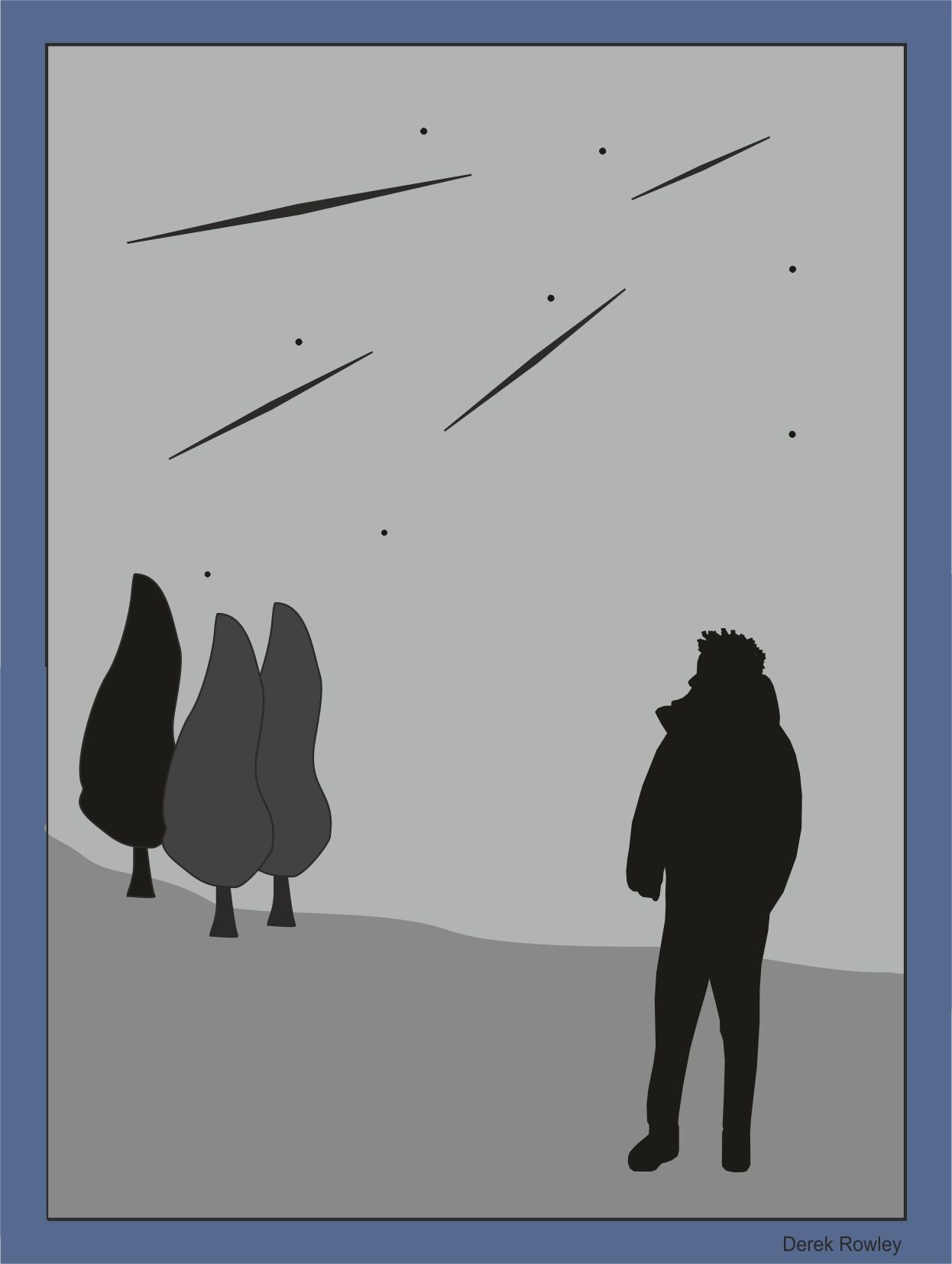
“Shooting star” – known as Meteor
Recommend strong meteor showings for this month
| January: | Quadrantids (3rd thru 4th January) |
| April: | Lyrids (22nd April) |
| May: | Eta Aquarids (5th thru 6th May) |
| June: | Arietids (7th June) |
| July: | Southern Delta Aquariids (28th July) |
| August: | Perseids (11th thru 12th August) |
| October: | Orionids (21st October) |
| November: | Leonids (17th November) |
| December: | Geminids (14th December) |
| Ursids (22nd December) |
Quadrantids (3rd thru 4th January)
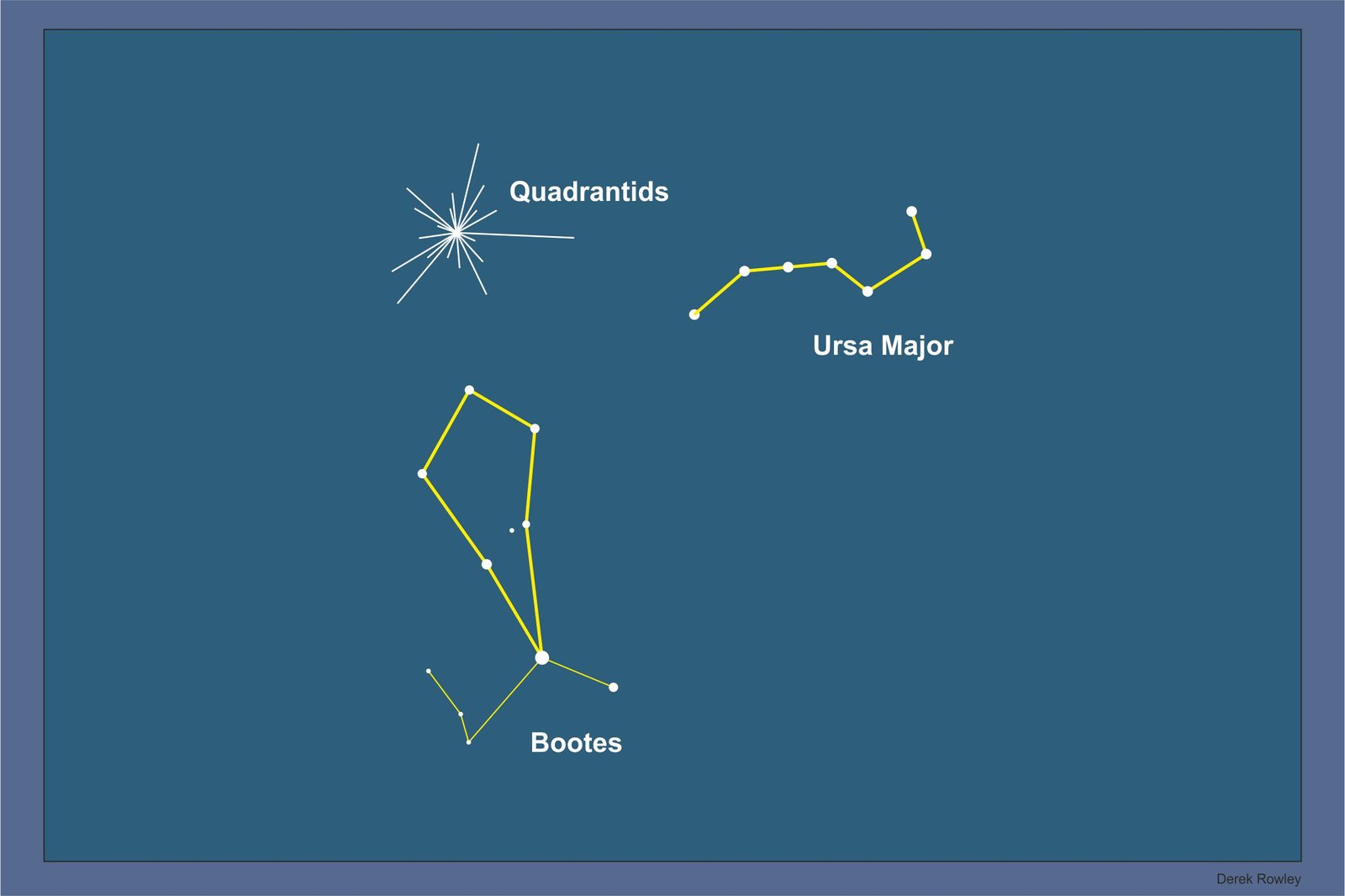
- Beginning to ending date: 28th December to 12th January
- Peak Date: 3rd thru 4th January
- Rating: Strong
- Zenith Hourly Rate (ZHR): around 40+ per hour
- Radiant Position: RA: 15h 28m / DEC: +50° (Radiant low at peak in UK.)
- Degrees: 232º
- Comet: Comet Thatcher
- Note: Blue & yellow striking / diffuse radiant expect at peak Strong in 1992 / favourable.
Lyrids (22nd April)
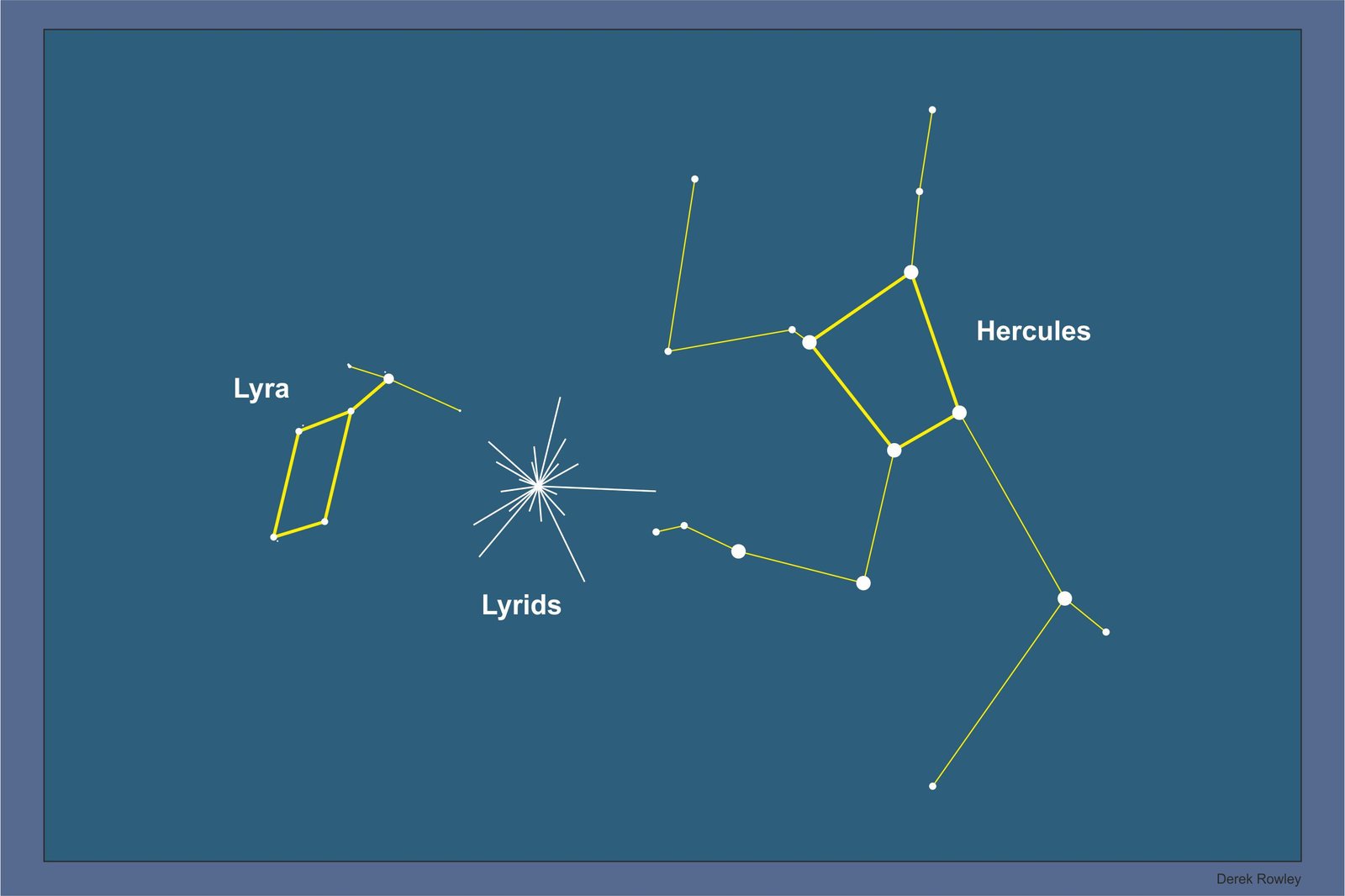
- Beginning to ending date: 15th April to 28th May
- Peak Date: 22nd April
- Rating: Strong
- Zenith Hourly Rate (ZHR): around 15 per hour
- Radiant Position: RA: 18h 08m / DEC: +32°
- Degrees: 272º (Face:- West)
- Comet: Comet Thatcher
- Note: Normally rather activity, but fine display in 1803, 1922 & 1982 / Quite favourable.
Eta Aquarids (5th thru 6th May)
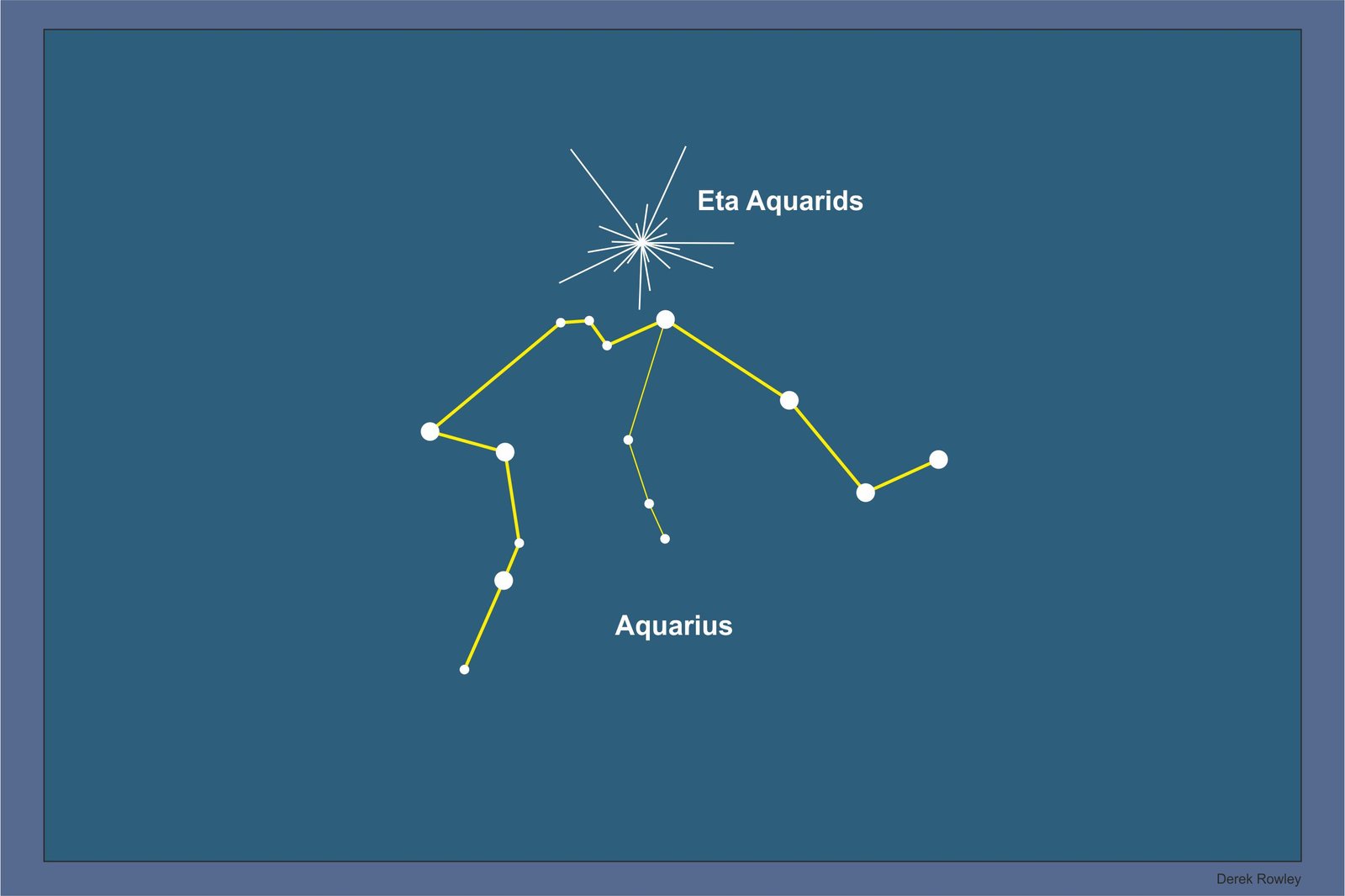
- Beginning to ending date: 19th April to 28th May
- Peak Date: 5th thru 6th May
- Rating: Strong
- Zenith Hourly Rate (ZHR): around 50 per hour
- Radiant Position: RA: 22h 20m / DEC: -01°
- Degrees: 335º (Face:- North)
- Comet: Comet 1P/Halley
- Note: Fine southern shower / poorly seen from the UK.
Arietids (7th June)
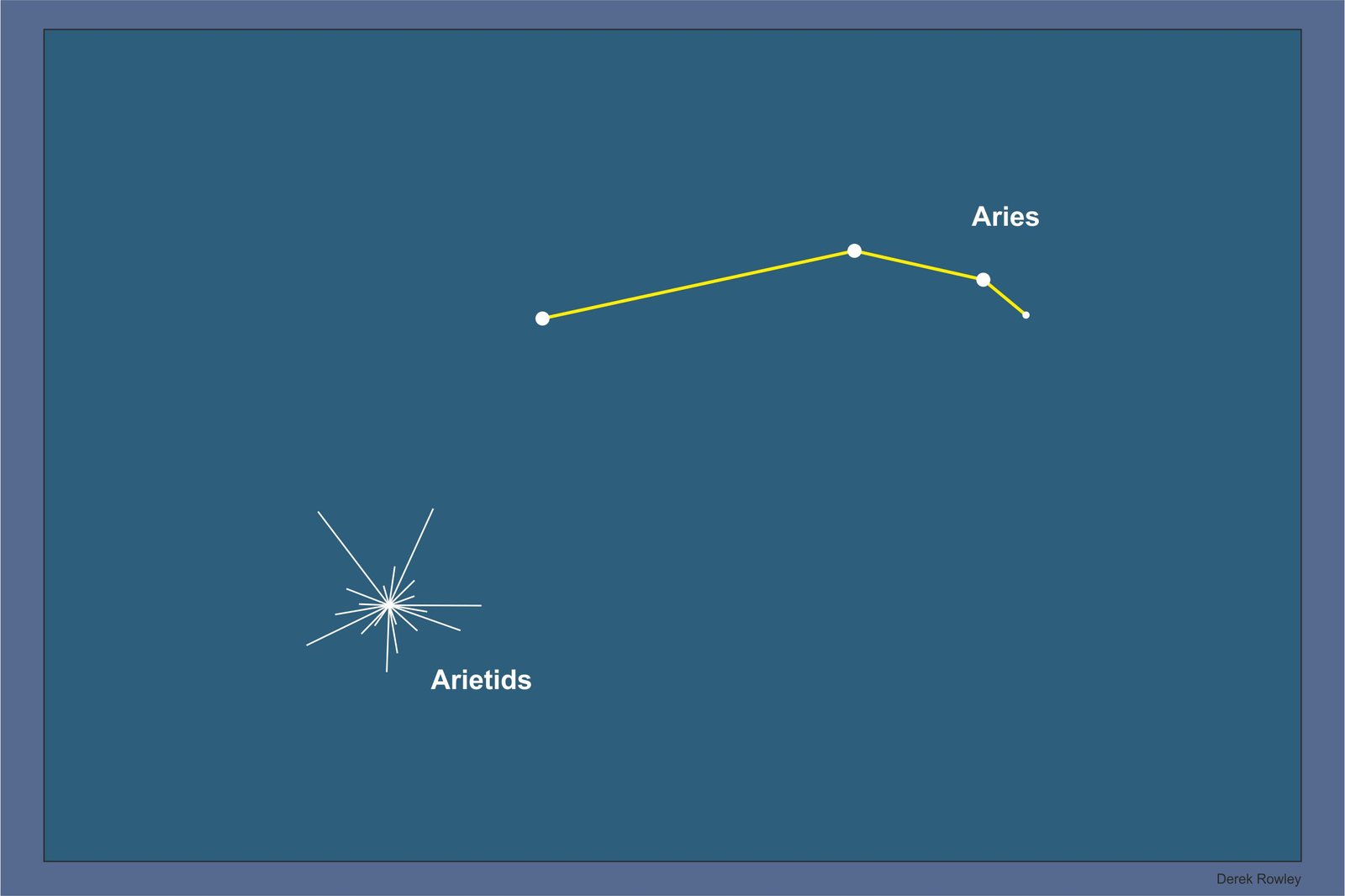
- Beginning to ending date: 22nd May to 22nd July
- Peak Date: 7th June
- Rating: Strong
- Zenith Hourly Rate (ZHR): around 54 per hour
- Radiant Position: RA: 02h 24m / DEC: +24°
- Degrees: 241º (Face: Southwest)
- Comet: 96P/Machholz
- Note: So close to the Sun when these showers reach their peak.
Southern Delta Aquariids (28th July)
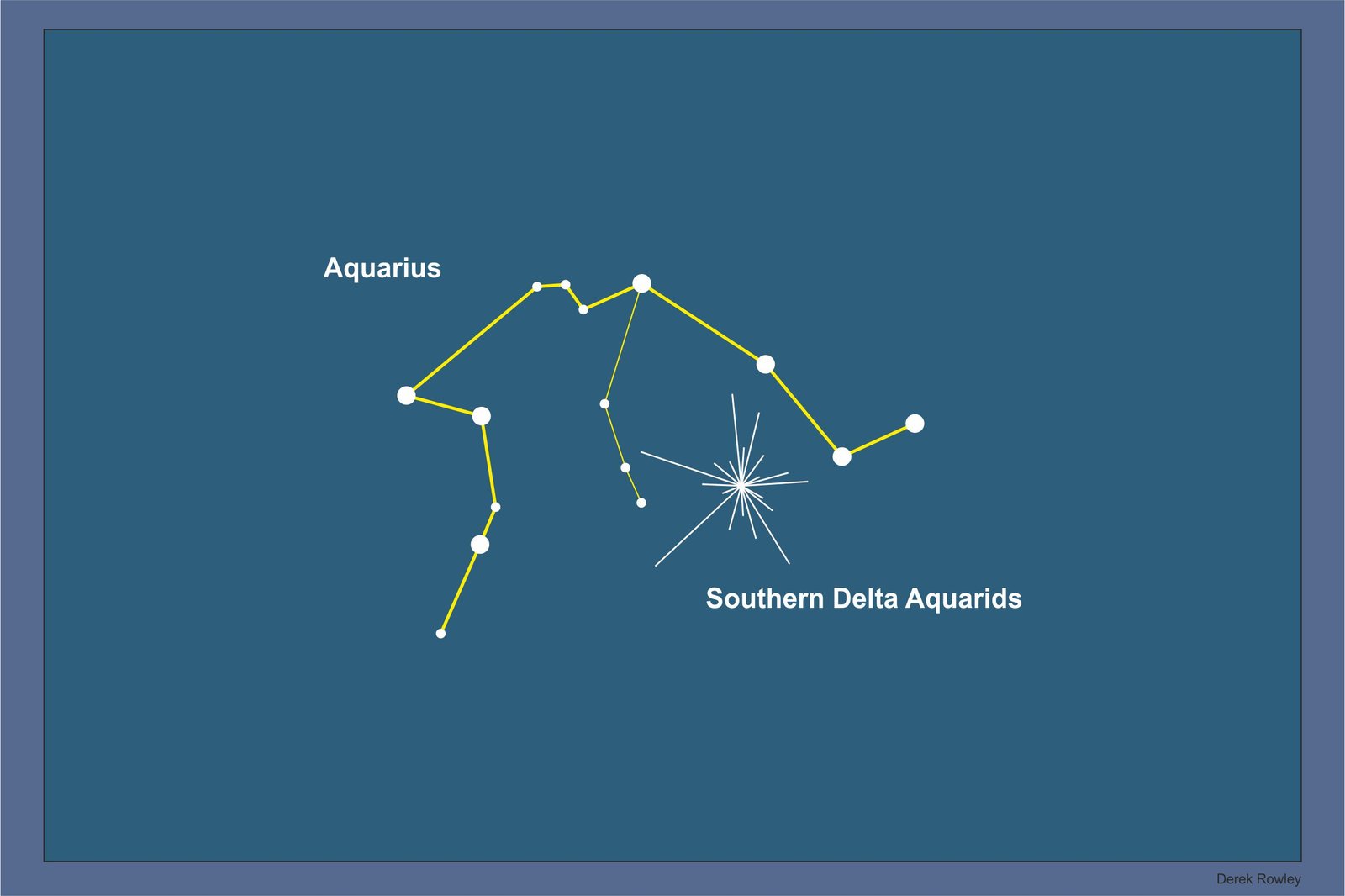
- Beginning to ending date: 12th July to 19th August
- Peak Date: 28th July
- Rating: Strong
- Zenith Hourly Rate (ZHR): around 20 per hour
- Radiant Position: RA: 22h 36m / DEC: -16°
- Degrees: 342º (Face:- North)
- Comet: n/a
- Note: Meteors tend to be faint / Favourable.
Perseids (11th thru 12th August)
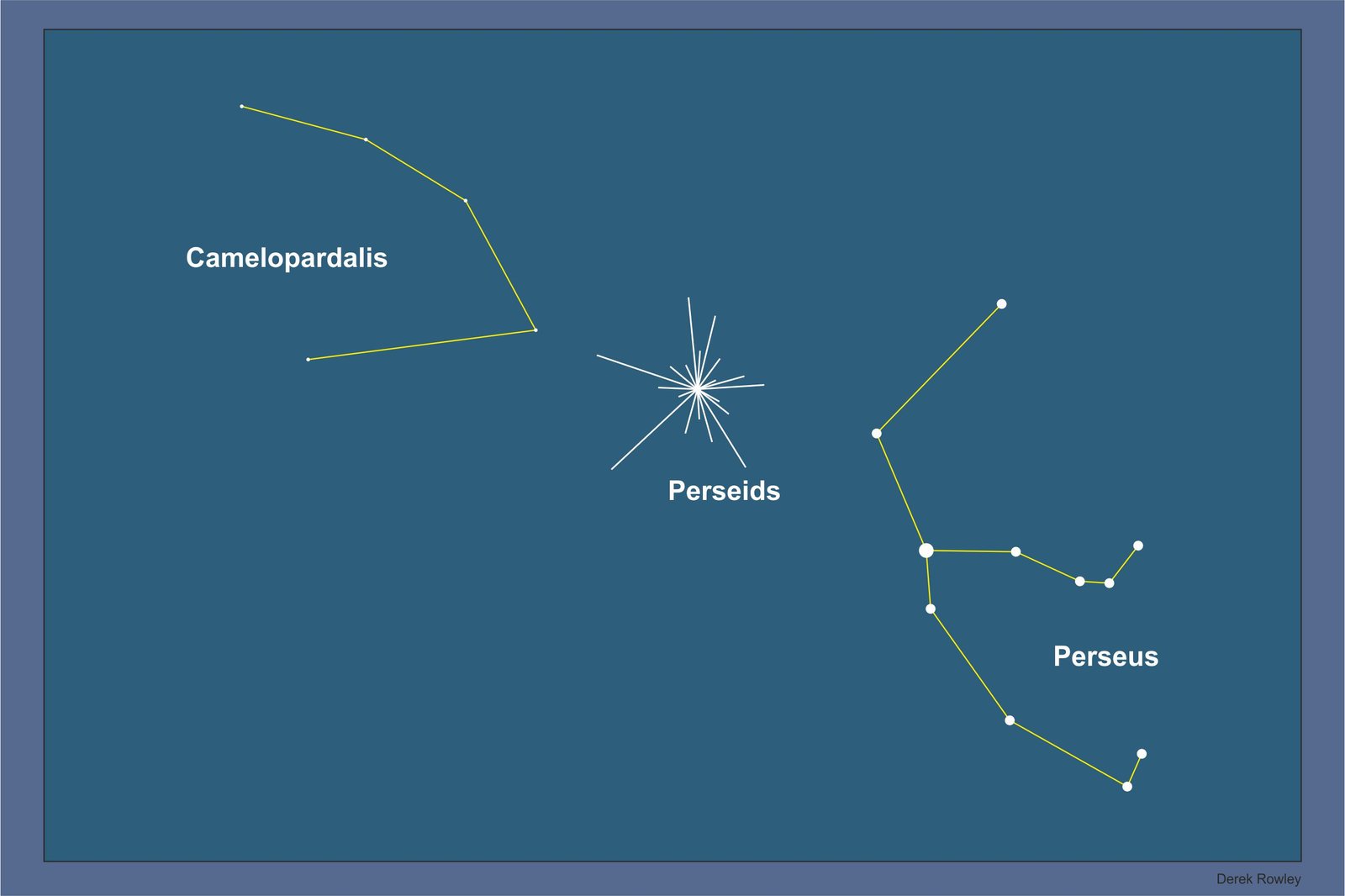
- Beginning to ending date: 17th July to 24th August
- Peak Date: 11th thru 12th August
- Rating: Very strong
- Zenith Hourly Rate (ZHR): around 90 per hour
- Radiant Position: RA: 03h 13m / DEC: +58°
- Degrees: 048º (Face: Northeast)
- Comet: Comet 109P/Swift-Tuttle
- Note: Rich shower of fast meteors / High proportion of bright events leaving trains.
Orionids (21st October)
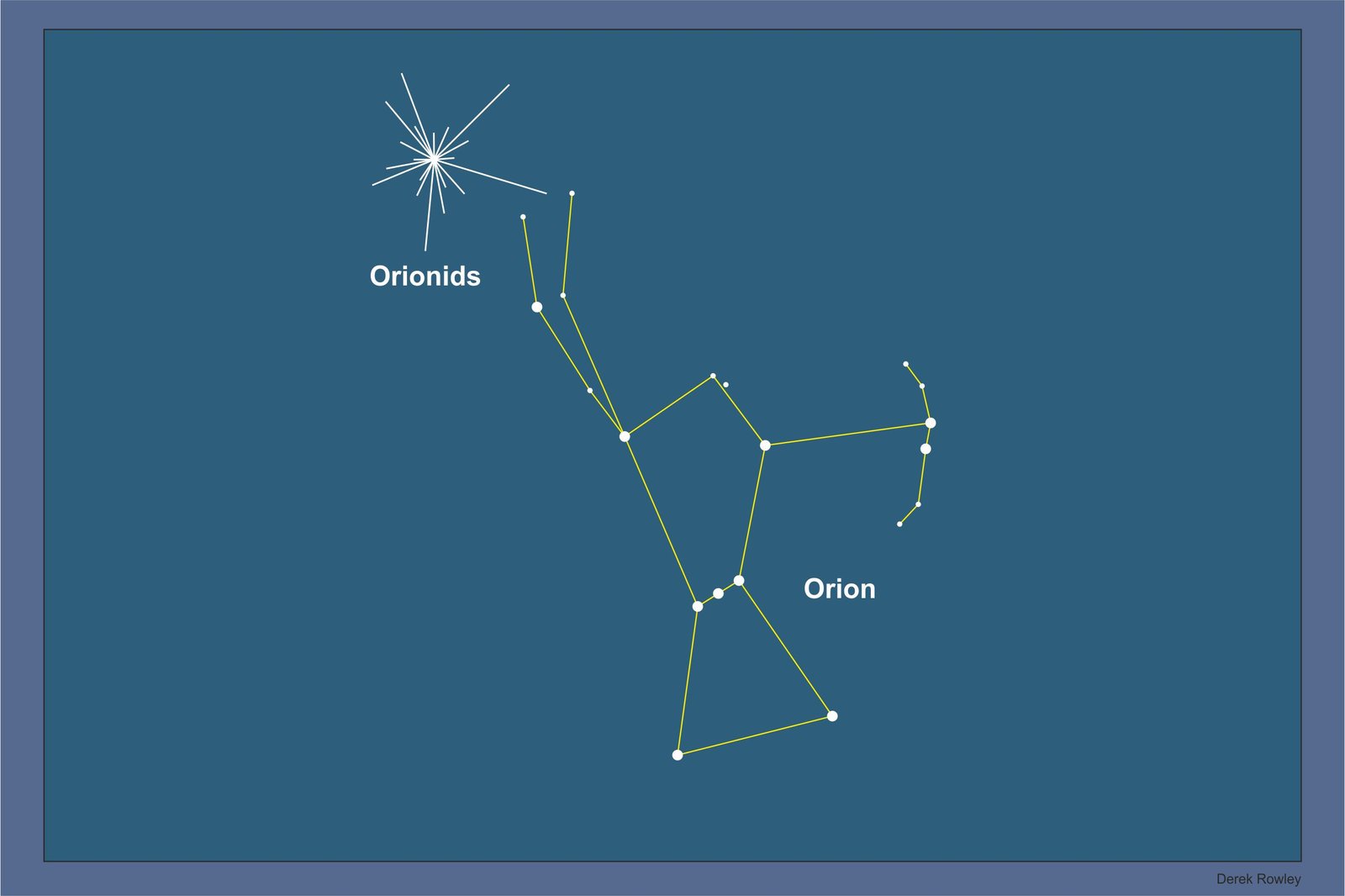
- Beginning to ending date: 2nd October to 7th November
- Peak Date: 21st October
- Rating: Strong
- Zenith Hourly Rate (ZHR): around 20 per hour
- Radiant Position: RA: 06h 24m / DEC: +15°
- Degrees: 096º (Face: East)
- Comet: Comet 1P/Halley
- Note: Fast meteors, many with trains / Good in 2006.
Leonids (17th November)
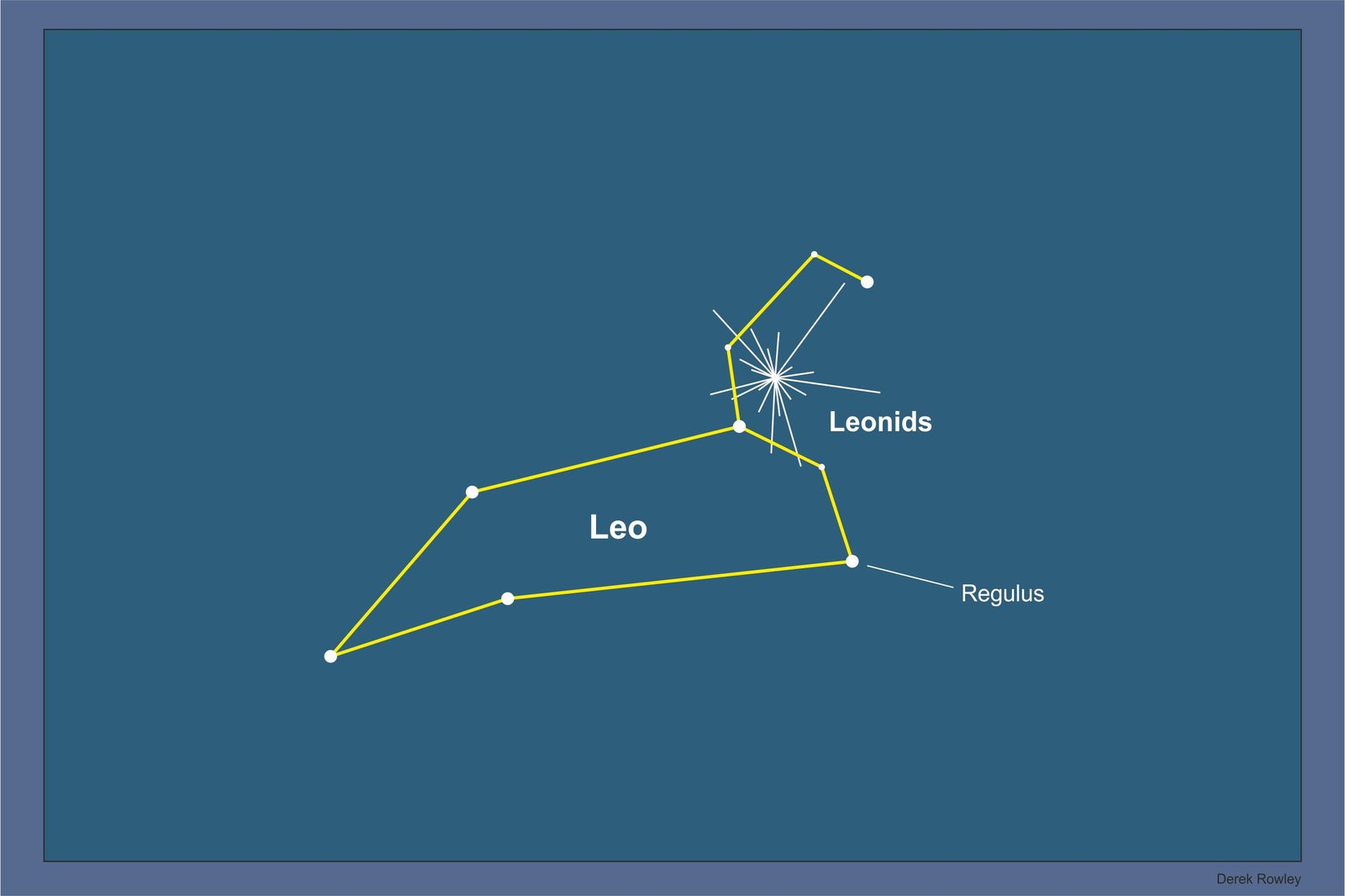
- Beginning to ending date: 6th thru 30th November
- Peak Date: 17th November
- Rating: Irregular
- Zenith Hourly Rate (ZHR): various
- Radiant Position: RA: 10h 13m / DEC: +22°
- Degrees: 048º (Face: East)
- Comet: Comet 55P/Tempel-Tuttle
- Note: Rich shower of fast meteors / Outburst / High proportion of bright events leaving trains.
Geminids (14th December)
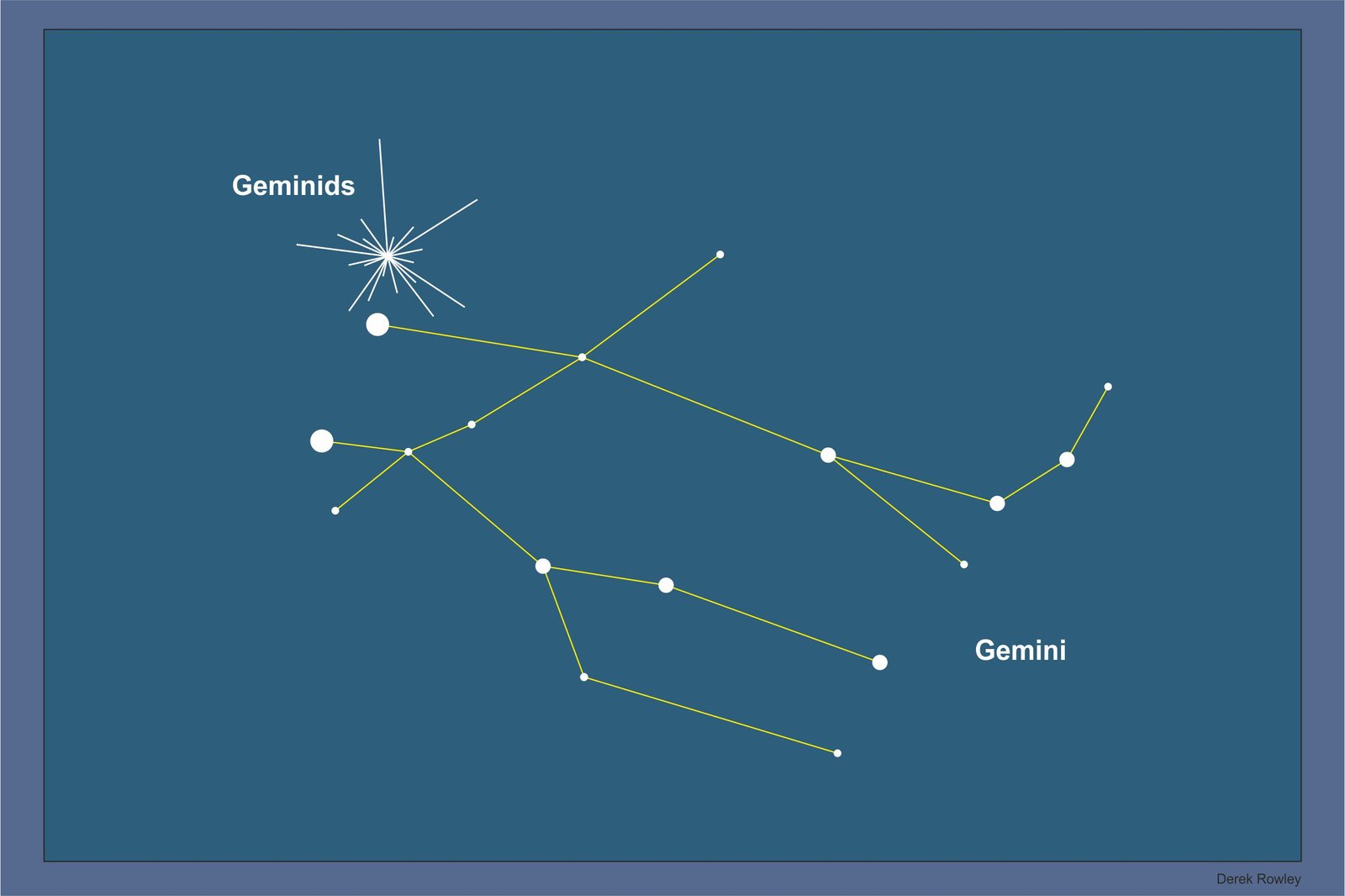
- Beginning to ending date: 12th to 16th December
- Peak Date: 14th December
- Rating: Very Strong
- Zenith Hourly Rate (ZHR): around 120 per hour
- Radiant Position: RA: 07h 32m / DEC: +33°
- Degrees: 138º (Face: Southeast)
- Comet: Minor planet 3200 Pharthon
Note: Richest of the annual showers, with slow meteor and a good bright events
Ursids (22nd December)
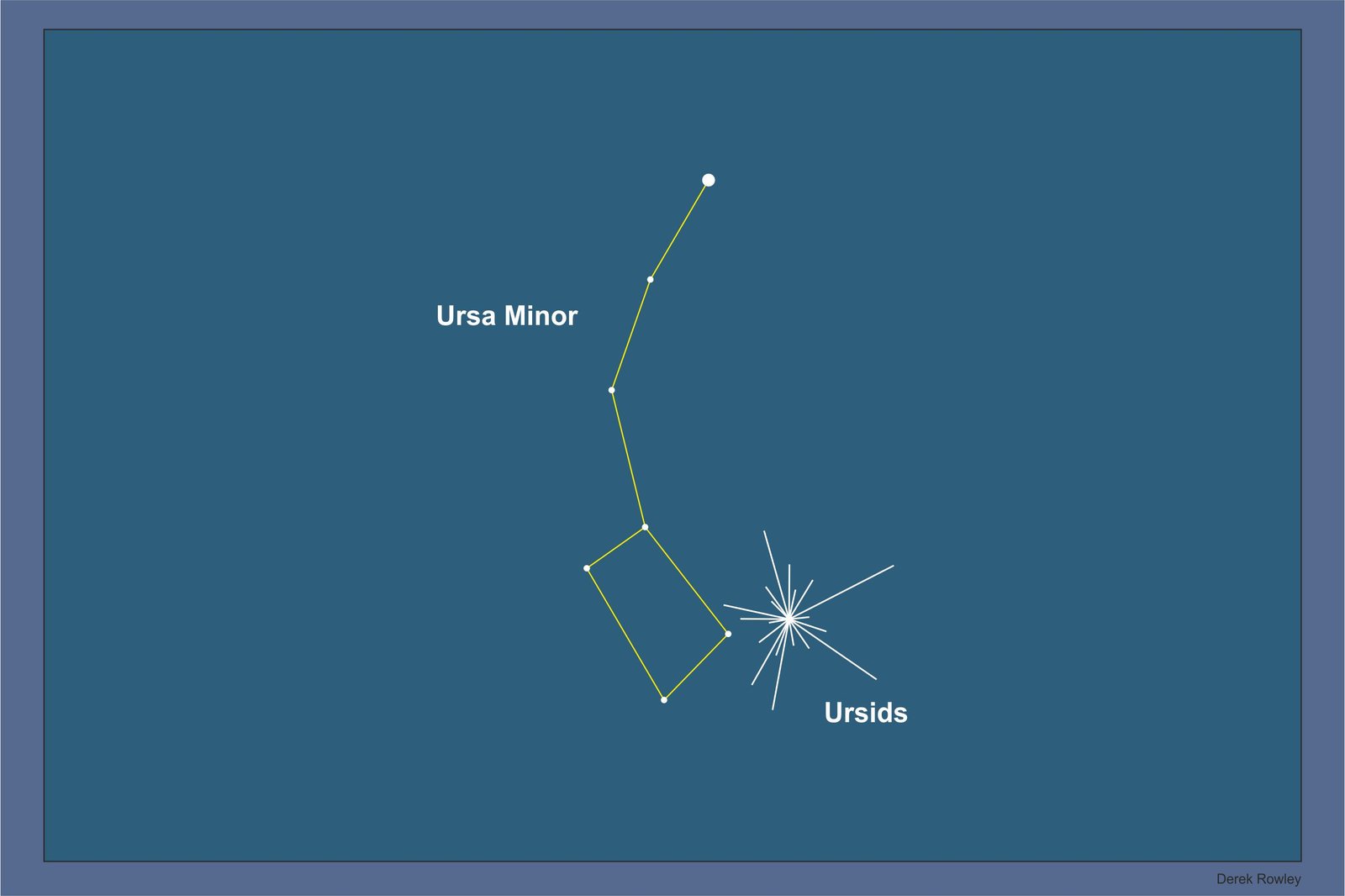
- Beginning to ending date: 17th to 26th December
- Peak Date: 22nd December
- Rating: Strong
- Zenith Hourly Rate (ZHR): around 10 per hour
- Radiant Position: RA: 14h 28m / DEC: +78°
- Degrees: 217º (Face: Southwest)
- Comet: Comet 8P/Tuttle
- Note: Under-observed shower which had produced outbursts in 1945, 1982 and 1986.
oooo
oooo
Meteor Keywords
- A meteor or “shooting star” is the visible streak of light from a meteoroid, heated and glowing from entering the Earth’s atmosphere.
- Most meteoroids that cause meteors are about the size of a pebble or less.
- Meteors become visible between about 30 – 70 miles above the Earth.
- Meteors may occur in showers, which arise when the Earth passes through a stream of debris left by a comet.
Fireball
- A fireball is a brighter-than-usual meteor as “a meteor brighter than any of the planets”
- Fireballs reaching magnitude -14 or brighter are called bolides. (See the Space.com – video.)
- Rarely to be seen.
Keys
- Beginning & ending date: Date in which the Meteor Showers will begin and end.
- Peak Date: Date in which the Meteor Shower should appear most active as best visible.
- Rating: Rough estimate of possibility of how good the Meteor Shower might be.
- Zenith Hourly Rate: Approximate number of meteors (shooting star) that will be visible per hour.
- Radiant Position: Mark the location in the sky.
- Degrees: Directions correspond to the following degrees by a compass.
- Comet: Earth passes through a stream of debris left by which comet? (parent object.)
- Note: Something to say.
oooo
Table of Contents
- Quadrantids (3rd thru 4th January)
- Lyrids (22nd April)
- Eta Aquarids (5th thru 6th May)
- Arietids (7th June)
- Southern Delta Aquariids (28th July)
- Perseids (11th thru 12th August)
- Orionids (21st October)
- Leonids (17th November)
- Geminids (14th December)
- Ursids (22nd December)
This list above of meteor streams and peak activity times is based on data from the International Meteor Organization.
OOOO
OOOO